Rhythm- Networking App for Musicians
Conceptualized and designed a networking app for musicians*
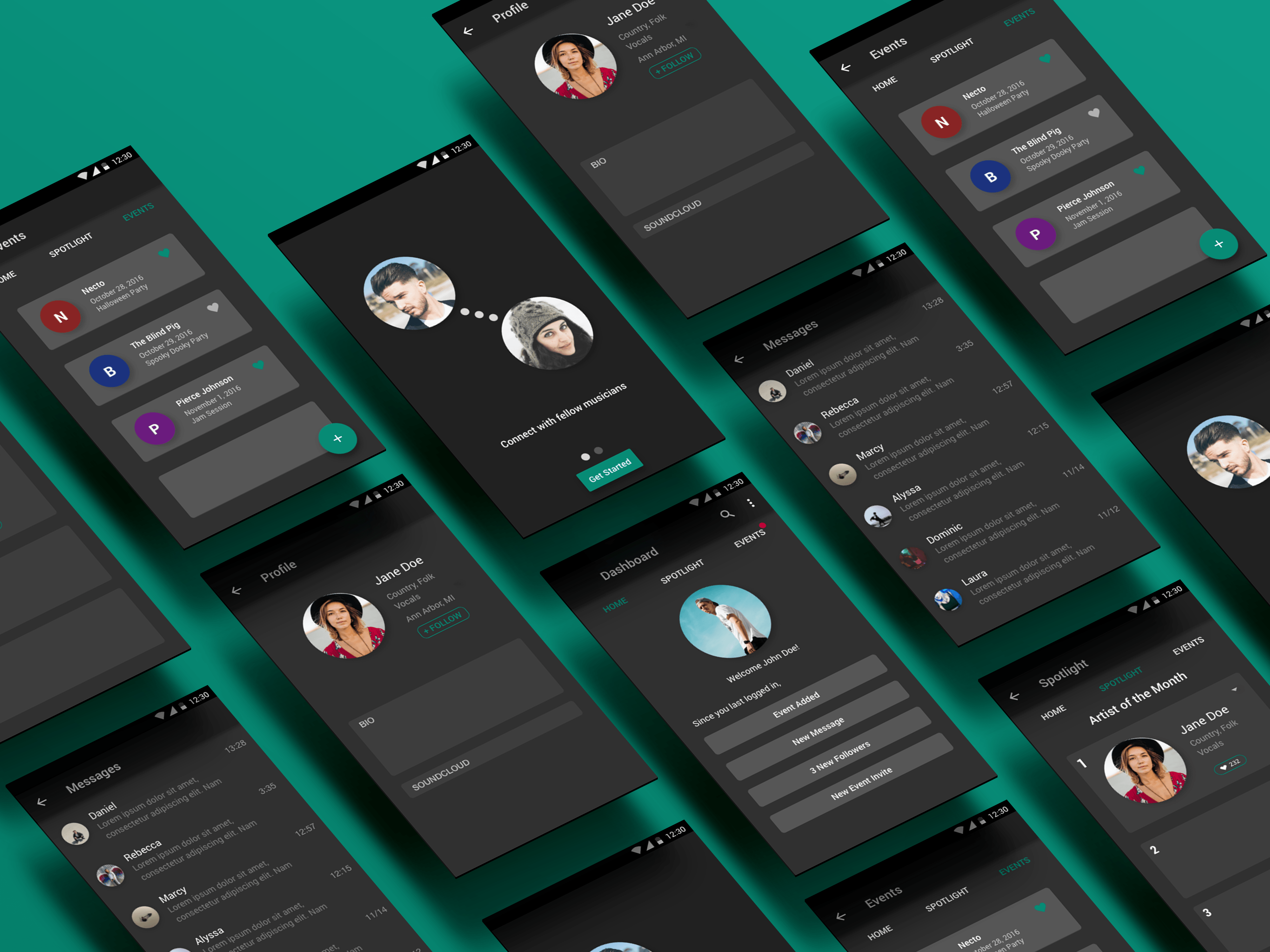
- Task: Develop a solution to any problem faced by a local community. The final form of the solution should be an application/ website
- What I did: Interviews, survey, sketching, storyboarding, paper prototyping, wireframing, hi-fi prototyping
*Individual project for Interaction design class, Sept-Dec 2016
The main stages of this project included defining the problem, sketching, storyboarding, paper Prototyping and creating a hi-fi prototype, interspersed with peer feedback sessions. The overall process was broken down into the following stages -
- Identify the Community
- Identify the Problem
- Establish the Goal
- Design Stages (Sketching to Prototyping)
THE COMMUNITY CHOSEN
I decided to focus on the problems of the student musicians at the University of Michigan. The university has a lot of student organizations such as Maize Collective, Stamp Nation, The Jam Club, that cater to musicians on the campus. I decided to choose this community because I am a musician myself and an active part of one such organization called The Jam Club. I decided on event promoters as my secondary audience as they played a huge role in giving musicians a platform to perform and grow.
SCOPING DOWN THE PROBLEM
To find out where the needs of my target audience were not being met, I conducted interviews with the heads of student organizations catering to student musicians, as well as student musicians themselves. I eventually conducted a total of 6 interviews. A Google form was also sent out to student musicians to ask them about their attitudes and behavior. I devised 3 personas and 1 anti-persona based on the interview data and survey responses.

MARKET ANALYSIS
Various existing applications and tools for the music community already existed, but each catered to different needs of the musicians. A unified platform that resolves all the problems of upcoming musicians had not yet been developed. Studying these platforms helped me understand the areas of the market that weren't explored.
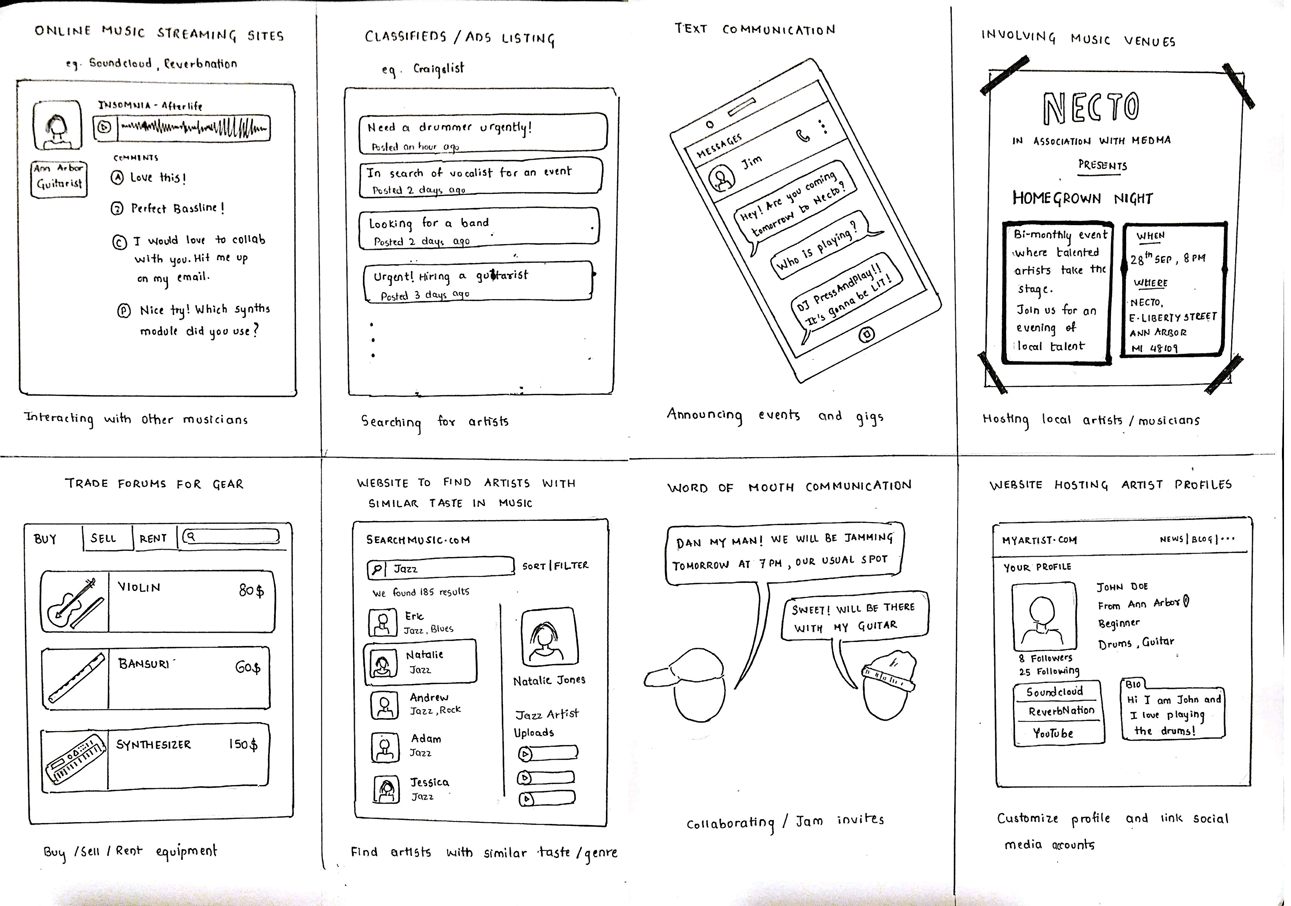
DESIGN EXPLORATIONS
With the data uncovered from the needs asssessment phase, I sketched out 8 unique ideas that would solve the problem. The sketches were very rough and this phase was meant to help diverge the thinking process.
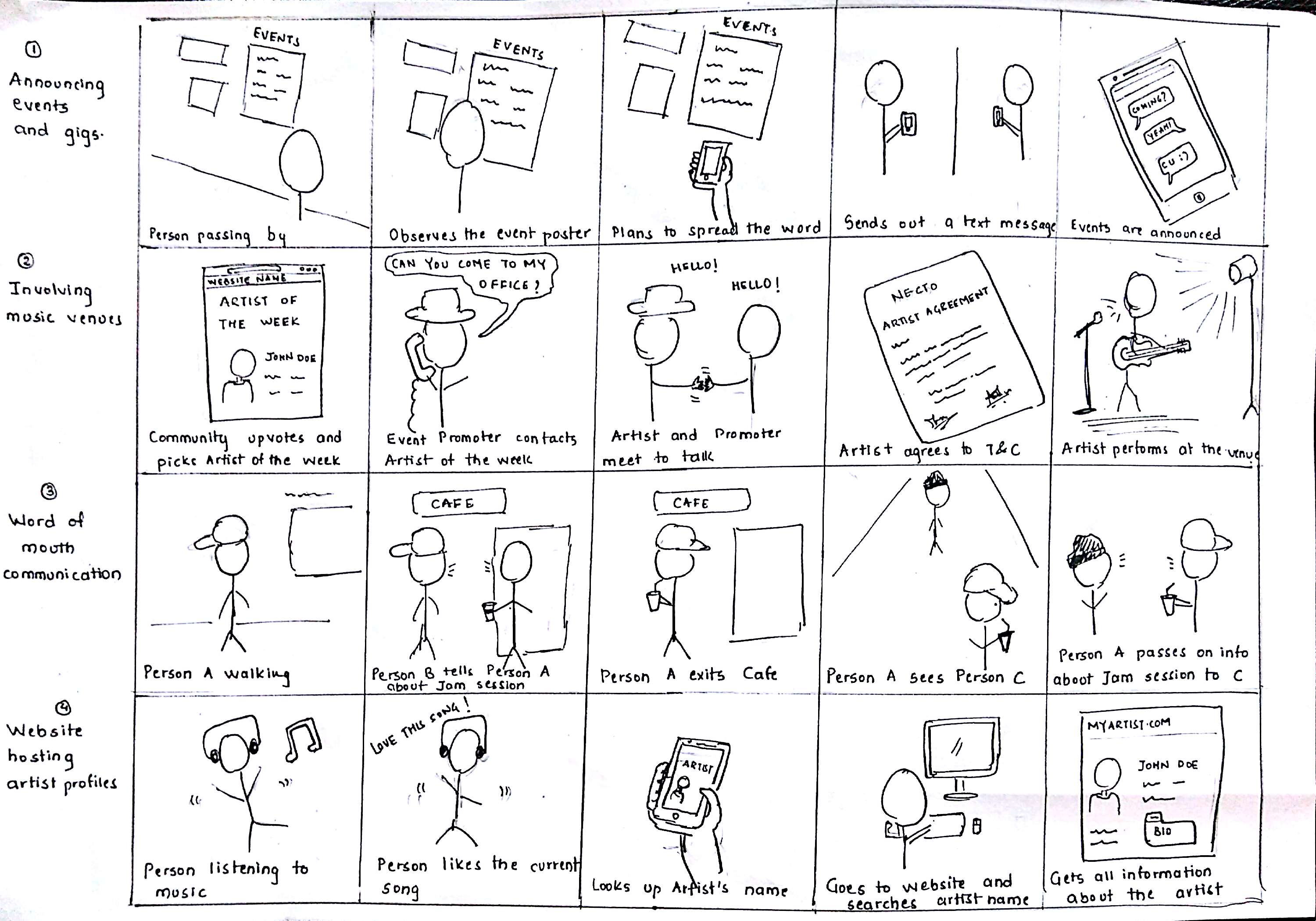
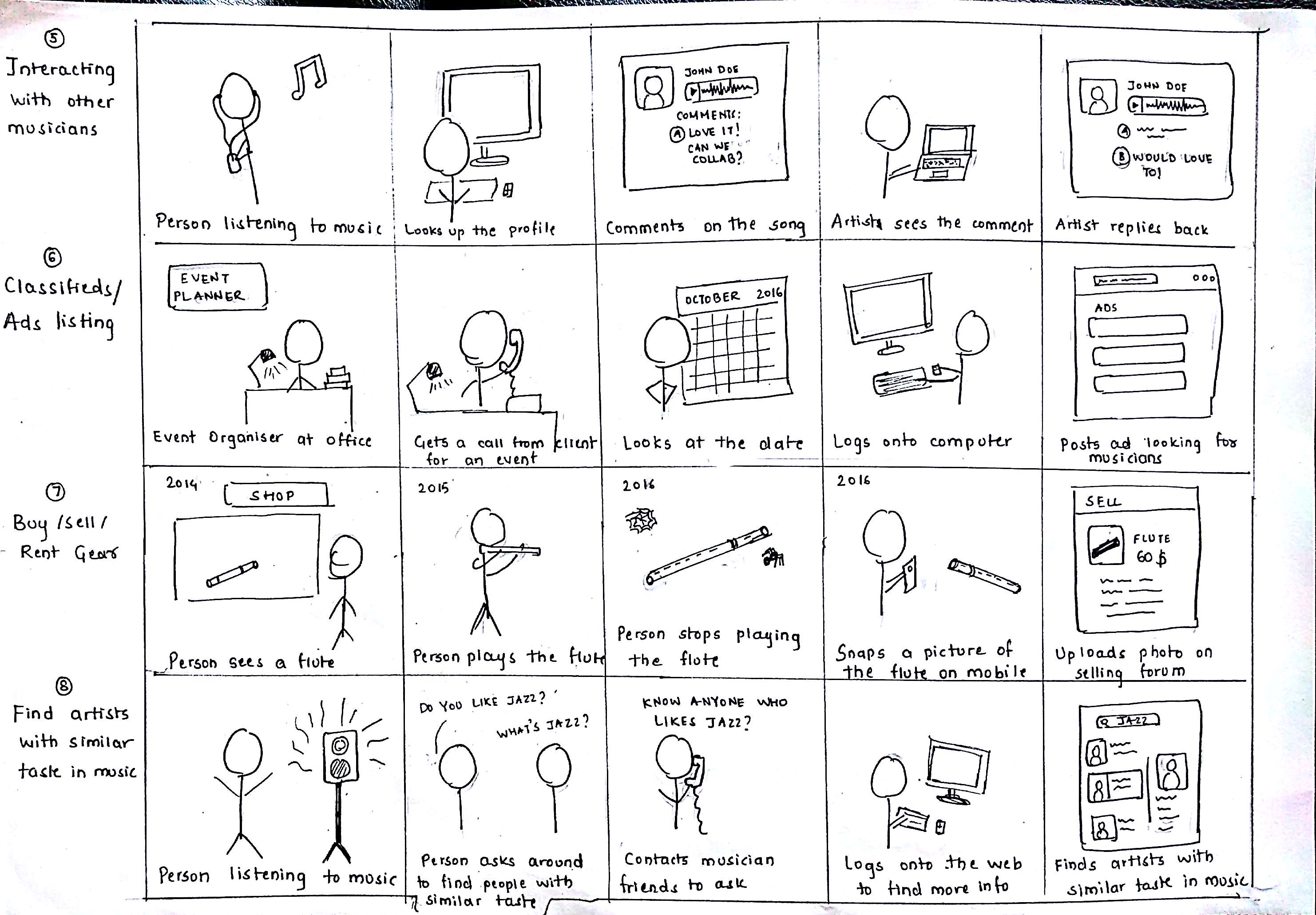
STORYBOARDING THE EXPLORATIONS
The next stage involved storyboarding the 8 sketches to uncover additional insights and explore real world implementations.
ESTABLISHING THE DESIGN OBJECTIVE
The sketches and storyboards helped shape the structure of my final idea. I established a project objective – designing a tool for local and upcoming musicians to connect and interact – to guide me while making design decisions further ahead in the process. My final vision of the project was for a platform that would -
- Increase and promote social interaction between local musicians
- Contain information about the local musicians
- Foster collaboration among musicians
DEVELOPING THE FEATURES
Feedback from the users, on my vision and the sketches, proved valuable in narrowing down the features in my deliverable. I finally decided on the following as my primary features
- Personal Profile - The Profile would display information about a musician's preferred genres, instruments played, website/ Soundcloud links and a short bio. For Promoters, it would display the Club affiliation, genres preferred, club website and a bio.
- Events Section - Options to Create Events/ Invite friends to an event
- Spotlight Section - Every month, the community will upvote an artist based on the track they submit. Promoters can book the top ranking artists, after hearing the mix and visiting their profile.
- Search for artists - Artists can be searched on the app by name/ genres/ instruments played.
PAPER PROTOTYPING
To test out interactions, I developed a paper prototype for the musician and event promoter user flow. Peer feedback received on the prototype helped me decide the minute details in the hi-fi prototype. The video shows the musician user flow while the promoter user flow can be found here.
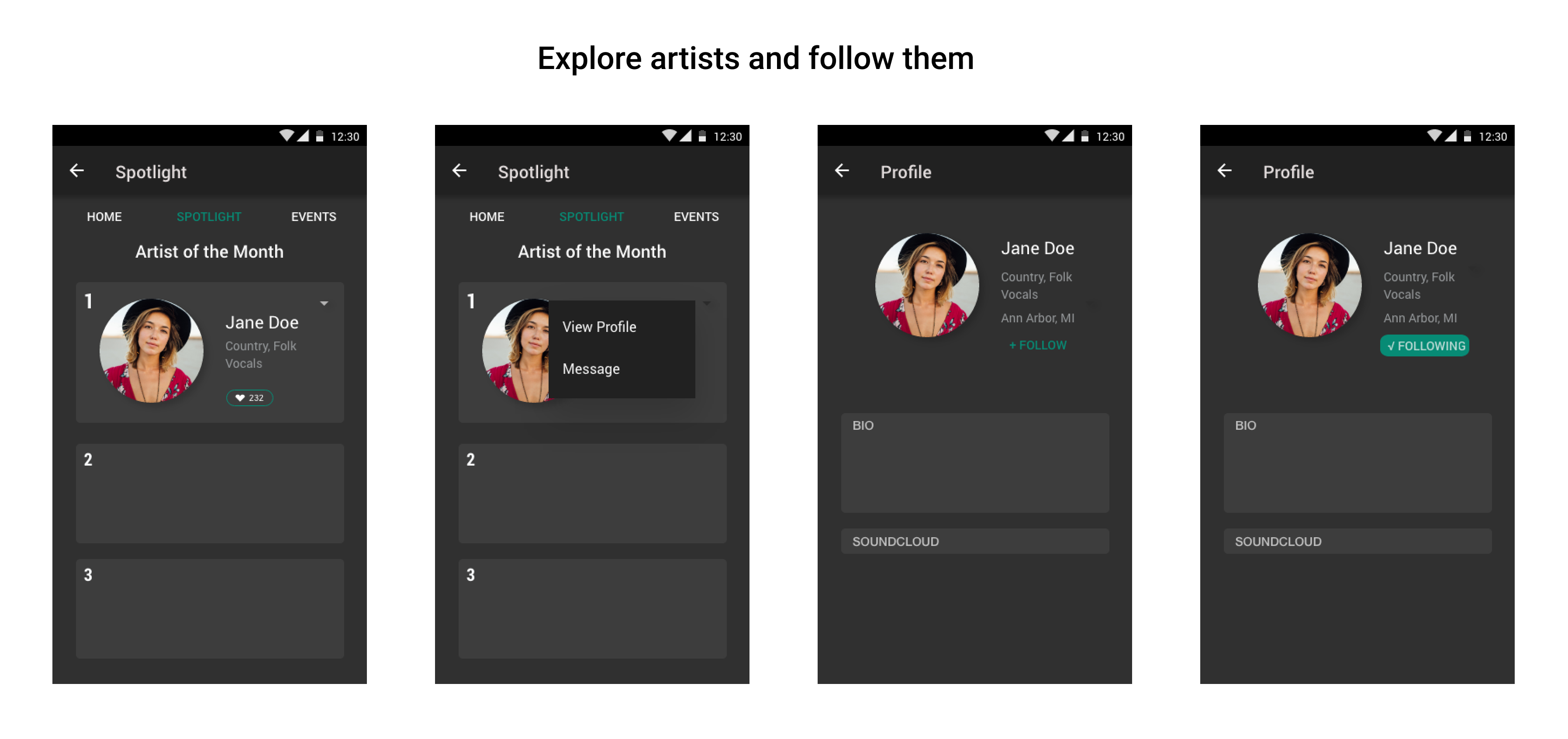
MOCKUPS
I designed the mockups with Adobe XD over Sketch due to the former's ability to convert screens to interactive prototype with just a switch from Design to Prototype Mode. The limited capabilities of making a design interactive in XD were sufficient for my final project deliverable.
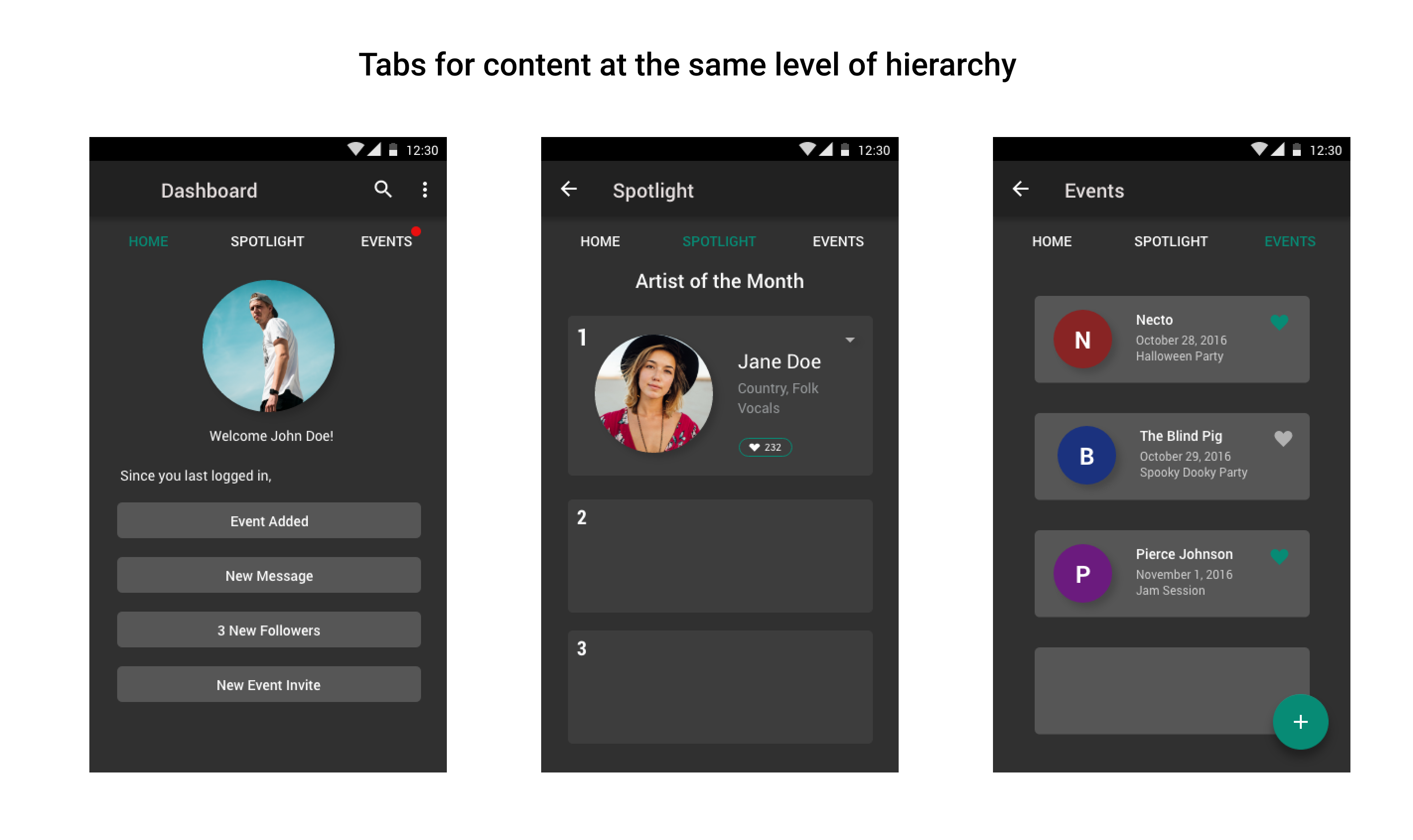
The final prototype was created for Android OS only. Being an Android user, it was easy for me to design the app for the Android OS because I was familiar with navigation, interactions and behavior for Android. For a thorough explanation of the proposed app and the whole process, check out the final report here.
REFLECTING ON THE PROJECT
With this being my first ever project in the Interaction Design domain, I learnt a lot about the various methodologies of design. While I briefly did User Research through interviews and surveys, I realized the importance of involving users early and often to shape the course of the design process. The final prototype I delivered was based on Material Design Guidelines, but my designs did not follow all the rules. I would love to revisit this project in the near future, design a better UI and test it out with my users.